January/February 2024
From the Bell Tower:
I have recently been reading a couple of books that have had much of their information sourced by
consultation of surviving parish church account books. From these documents much unique history
of both local and national relevance is revealed. So, I have decided 2024 needs to be the year that I
must look more closely at the churchwarden’s accounts and registers for Great Ryburgh that date
from 1547 on.
According to the date on my photographs, I made a brief foray into these records held in the
Norfolk Record Office in 2008. (N.R.O. PD621/51) At the time I was looking for bell references rather than considering
the wider contents, but there is enough in these photos to whet my appetite for what else might be
there.
In 1947 Revd. F.H.Tatham published his village history “Great Ryburgh”, and whilst he briefly
mentions these documents he doesn’t seem to have examined them very closely in this booklet, in
spite of the fact that he had them all to hand in the village. What he did do however, was to make
transcriptions of some of them and consult with others about the contents. There are some of these
notes and transcriptions now with the originals in the N.R.O. and of which I took photographs back
in 2008. These are far easier to read than the originals, and so I can make a start here, in the belief
that the transcriptions are accurate, to reveal their contents.
The Parish Registers begin in 1547 but the oldest account book, entitled “The Churchwardens
matters”, was “begun in the “39th year of happie memory of Queene Eliz.” i.e.1597. The opening
page begins with a description of “The lands free belonging to the Townshippe of great Riburgh”
followed by “The stocke of money belonging to the towne of great Riburgh: 1597” This includes a
gifte of £8 from Queen Elizabeth “lymited to the poore”. And a further “20 shillings” bequeathed
by the late Thomas Buttes (Lord of the Manor,) “for the releafe of the poore”. Buttes’ former
housekeeper and beneficiary Margaret Matson also gave “20 shillings” to the use of paying the
“head sylver due out of great Riburgh to our sovereigne…...” This was a payment which supported
tenants via the leet court system.
We also see on June 18th.1598 “for the new making of the tymber worke of the steeple, the charge
whereof amounteth to £4.12/- whereof 40/- is in hande by the guifte of Thomas Buttes esquire
deceased.” The following month came the “charge for the casting and laying the leads uppon the
steeple”…. a further 42/-6d.
There is recorded in 1613, payments that churchwarden James Wase “hath expended about the new
porch” and also “carrying and fetching of lead for the South Porch”. (It is not clear whether these
are one and the same or the new porch refers to the North Porch) In 1618 payment of “5/-6d” was
made “for mason’s work at the Church butters”(Most likely the Butress to the South Nave wall).
F.H.Tatham’s entries start to get summarised after some pages so we read page 61 1636 “Two
ladders making 3/-8d”, page 93 1689 “Paleing (fencing) the chyard £5-18/-0d”…. together with
“more paid for quarters wages, repairing the Church roofe, mending the Town Bridge and to other
repairs and charges £3-19/- 10d”. Significantly to me, that same year Mr Fen was paid “£1-7/-
71/2d for Lyme for repayreing the Ch: wall” and “Tho. Parker, mason for new building the wall £3-
8/-0d” and for “1000 bricks 12/-”.
The illustration dates from 1693 when the account book had been in use for nearly 100 years. The
page is headed thus and is in effect a list of ratepayers who are holding a share of the Great Ryburgh
Manor belonging to the Bacon family:
April 20th 1693
Wee whose hands are hereunto subscribers with the Minister Churchwardens Overseers
Constables and other the chief Inhabitance of the Towne of Greate Ryburgh doth with a Gennerall
Consent make this hearunder written to be of Legall valuation for the said Towne for all
Assesments Rates bills whatsoever shall be Affect or Arise by any charge happon in the said
Towne
Impr’mis The Hall or Mann’r Estate as it is now in forme lett into severall Tenn’ts hands.There then follows the list of names, from the wealthy, Mecke, Skippon, Wantling to the less well
off, Messrs. Chapple and Sizeland. This last surname has lasted in the village to the present day
and you may see that even then there was a Mr Cooke “his estate (£) 2 in the village", but
probably less likely to be the ancestor of our present village family.
Perhaps you can see from these brief extracts why my appetite may have been so whetted, and
consequently, during the course of the year I hope to find more things of significance. Moreover, I
have hopes that a couple of questions that I am quite often asked and remain unanswered might
come to light in the course of future investigations of these church records: such as, Where did the
stone coffin come from and when? And what were the circumstances of the discovery of the font
base in the churchyard and could it have been buried during the religious upheavals of the 16th
Century? Who knows, just watch this space.



My photographs of pages from NRO. PD621/51 reproduced by kind permission of the Norfolk Record Office
********
March 2024
From the Bell Tower:
For those readers who are acquainted with the history pages on this
website, it will come as no surprise to observe that the Revd. Morris Fuller 1830-1901
has become something of a mildly obsessive preoccupation for me!
When I began to research his early life, I was anxious to “fact
check” his reported dealings with our village as Rector between 1884-1890. It didn’t seem
fair to present a portrait of a man that was all negative and with no apparent saving
graces, as do virtually all the contemporary local references to him.
His early upbringing seemed to suggest explanatory, even mitigating circumstances, that
began with baptism into a strongly Calvinist “Dissenting” Church, with an affluent “Trade”
background on his devout mother Hannah’s side, and a socially ambitious tradesman and
ultimately bankrupt, often absentee father, Thomas. Morris clearly inherited ambition and
the “brass neck” of the bankrupt father and this was indelibly fused with his devotion to the
first principles of the English Church as he saw it. The one thing I haven’t found out yet is
whether he ever met or was directly influenced by leading “High Anglican” priests, John
Henry Newman and Henry Edward Manning, both of whom had converted to Catholicism
by the time Morris was embarking on his own Church of England journey.
It is certain however that he rejected the austere discipline of his birth early in his career
for the flamboyant ritualistic disciplines of the upper ends of the High Church. These he
promoted with a zealous and unshakable belief in his own abilities never to be in the
wrong. Throughout life, he ploughed his arrogant furrow paying scant regard to the many
of his “flock” who were the inevitable collateral damage. He was an inveterate self
promoter and not above penning the equivalent of his own “Trustpilot” reviews. There
seem to be very few who did not find him a difficult man with whom to deal and there are
some very unguarded comments in letters from the clerical hierarchy with whom he
crossed swords.
He was always a driven and energetic priest and no one could have labelled him as lazy.
But, by his own admission, and for many years, it was his goal to get a London Parish,
preferably with minimal duties, to enable him to carry on with his historical researches,
which in his opinion, were of notable authority. His failure to secure the vacant Chair of
Dixie Professor of Ecclesiastical History at Cambridge tells that not all were of his own
opinion of himself.
Since George Tatham had already established a High Church regime at Ryburgh, it was
clearly Fuller’s ambition to control his villagers politically and morally, as well as spiritually,
that led to his local downfall and an increase in his efforts to try and fulfill his ambitions
elsewhere.
In Jan 1888 Fuller wrote:
"11 Marlborough Street
Brighton
Jan. 26 1888
My dear Lord Bishop,
My friends are pressing my claims with the Government for the Crown living of St
Bartholomew’s, Moor Lane, Cripplegate, and I have seen a letter this morning from Mr
W.H.Smith in which he says that he is holding his hands for the present at the request ofthe Bishop L. From this I gather that your Lordship may have something to say to this
appointment, and am writing to ask you to be kind enough should my name come up in
your correspondence with Mr Smith, to say a good word to that gentleman, in favour of my
candidature.
A City living would suit me better almost than anything else, as it would bring me near the
British Museum and other libraries, where I might prosecute my studies in connection with
Church Defence and the parochial work being comparatively light, I should have more time
on my hands than in an ordinary cure - and am anxious to get into your Diocese. Your
Lordship may remember that the Archbishop brought Mr. Moore up to the City living from
Maidstone for this very purpose, & his investigations are very much in the same line as my
own - which are much needed for the coming crisis.
By this post I am sending you my last article on the subject, and I have a large work in the
press “Our Title Deeds” - which the Earl of Selbourne has permitted me to dedicate to him.
We are spending the winter in Brighton, and I am attached to one of the leading churches
here where I am Morning Preacher.
Mrs Fuller joins me in kind regards, & wishing you all the Compliments of the season. I
remain
Your Lordship’s faithful servant Morris Fuller."
This is overwritten with the Bishop of L[ondon], Frederick Temple’s instruction to reply:
“Say that the question under consideration is whether St Bartholomew’s shall not be
merged in St Giles, and that as yet I have no idea how that question will be decided.”
As the Scandal was breaking in Ryburgh in April 1888, Morris received the decision of his
longstanding attempts by negotiation with the then incumbent and the Patron to be
presented to the living at St Mark’s Marylebone Road in London as an all but faits
accomplis. This attempt failed:
"My dear Sir, I have used all my endeavours to judge you fairly. I do not think it would be
wise for you to undertake the charge of such a parish as St Mark’s Marylebone. I can not
say more
Yours faithfully
F Londin"
Morris Fuller did eventually get to St Mark’s and the story of that journey comes to light in
correspondence that vividly illustrates the “Marmite” factor of the broad Church of England
and demonstrates that there is no right or wrong to it all….. unless you happen to be on
the other side!
The most striking thing to me is how nothing has significantly changed in the interim. Some
of the exact same issues twixt High and Low surfaced during my time in Ryburgh, with the
local Diocesan hierarchy, as in Fuller’s time, having to juggle inescapable compromise
over intractable viewpoints and with its successful outcome and consequential collateral
damage.
Further to that, some of the current controversial issues under discussion in the C of E,
now “out of the woodwork”, were in Fuller’s time, not just brushed under the carpet but
simply unacknowledged so the establishment remained unruffled. If anyone wishes to
pursue that further, just do some research into Archbishop (of Canterbury) Edward White
Benson, his wife Mary and family! It was Benson who had to decide on the case of the
ritualistic behaviour of Fuller’s first London Curate and future son-in-law Revd. Albert
Edmund Briggs……but that of course is another fascinating trail “off piste” that Morris
Fuller has led me down and tells me, that unfortunately, I haven’t finished with him yet!
Morris Fuller died as he had lived, without admitting he was wrong….. leaving an unsigned
letter of resignation from St Mark’s on his desk.
********
April 2024
From the Bell Tower:
In the February column I wrote of searching church records to find the answers to some
longstanding conundrums, e.g. Where did the stone coffin come from and when? Well, as
it happens, I have found a source for the hearsay of which I had been aware.
Possibly some readers may remember Goose and Son Ltd. Booksellers and Stationers in
Norwich? It is in one of their leather bound blank page books that F.H. Tatham started to
compile a typed inventory of a “List of Property and Investments pertaining to the Rectory
of Great, with the Vicarage of Little, Ryburgh” together with a “List of Registers and Other
Books in Iron Chest in Church” The latest date given in the typescript is 1924 and so I
would estimate that was the likely date of the start of this volume. There are many
additional entries made both on the typescript and on the verso’s of the pages in FHT’s red
and black ink handwriting. It also includes, again handwritten, similar listings for Gateley
post 1924.
It is in this document that we find listed, “In the Chancel, An ancient stone coffin, said to
have been dug up in Little Ryburgh Churchyard previous to 1880” Is this Tatham’s hearsay
memory of Ryburgh before he went off to boarding school? At least we can now say where
the rumour came from but I have found no reference to it in the relevant Churchwardens’
Accounts of the 1870’s that I have recently consulted. Also from the same Inventory, “An
ancient Font, found partly buried upside down at the time of the Restoration of the Church
(that of his father George) and restored in 1859.” As with the stone coffin no further
information seems to be available.
Returning briefly to the coffin, after Frederick Ashton Hill had been in post for about a year
in 1970, the minutes record “The Rector drew attention to the removal of St Andrew’s
statue to the site of the Bacon (Bridget Buttes tomb) memorial. It was suggested that the
stone coffin be removed and a permanent place be made there for the statue” As we know,
that didn’t happen and if anyone has ever tried to lift the coffin, that is probably why!
Something else that didn’t happen in1972 where the advice for new carpets was as
follows: “that the colour for the chancel and (N) transept should be pink, St Thomas’
Chapel blue and the Nave neutral" !
The care of churchyard trees has always been an issue, having just had the Scots Pine
tree felled from the South East corner of the churchyard at considerable expense following
recent storm damage. A stark reminder of inflation over my lifetime is illustrated by the
statement from the Rector in October 1955 that “a firm had stated their willingness to cut
down the tree in the churchyard for the sum of £15-15/-0d".(This represents a bill 124 times
cheaper than the recent emergency works). "After discussion Mr. (Henning) Boesen
proposed and Mr (Harold) Bloomfield seconded that this tender be accepted…. Mr Boesen
offered to see that the tree was sawn up so that logs could be split up and proceeds given
by their sale to the church funds. His kind offer was gratefully accepted” It was reported to
the February 1956 meeting of the P.C.C. that “Proceeds from sale of wood from the tree
recently felled in the churchyard amounted to £6-12/-6d. The Rector thanked all
concerned, especially Mr J(ohn) Abbs (bellringer) Mr Whittaker, Mr Bloomfield and Mr
Boesen".
Other entries in the records illustrate details that I had never previously considered: for
example I had never thought that the porch doors were not “as built” but read that in the
Autumn of 1958 that “Fishers (builders) had agreed to ways and means of reducing the
draughts in the church …..draught excluders on inside doors (thick felt strips, still just
about hanging in there on the chancel and tower door) and reinforced glass in the top
panels of the outer (porch) doors with two wooden shields buttressed to the lower panels
during the winter months” suggesting that the doors originally came with just the bird-guard
mesh on a skeleton frame as so many outer porch doors do.
Back in the day, 1972 to be precise, there was something of a discussion regarding church
insurance and a re-quotation increase of premium which after some 10 years was clearly
somewhat shocking. If you have read of the fate that recently befell Beachamwell you
might well wince at the suggestion to reduce premium costs in Ryburgh “that in the event
of serious damage the replacement of existing stained glass windows to be of clear glass
& the peal of six bells be replaced by one bell”. The following meeting in October’72
reported a suggested cover of £65,000 with an annual premium of £100, which was
agreed to. It doesn’t say if that included the PCC’s draconian suggestion and which
thankfully has long since been renegotiated.
To finish on a bell-related note, again in 1972 we read:
“Mr Cooke of Fakenham had inspected the bells and reported one had a bump in it. Mr
Russell (Ryburgh School Headteacher) explained the workings of the bell [which] needed
a new brace. The bearings were satisfactory. A new wheel would eventually be needed for
one of the bells but as this was not being used the matter was left for the time being” . As for
that last comment, I think we are still waiting for this particular need to actually arise and
the stay, the required “new brace” was long since replaced.
********
May 2024
From the Bell Tower:
I am often asked “how old is the church” but that is a question to which I cannot give a definitive
answer. Whilst there is some enthusiasm for it being a Saxon Church, (i.e. pre 1066) the current
view is that it is of the 12th Century, which still makes it some 900 years old. When you examine the
very start of the walls in various places, as I have recently done, you find the courses of brown
stone sitting on the sub-soil that would suggest that the building was laid out as one entity - or at the
least the tower, nave, chancel and part of the South transept. If you then look to the height of these
walls, there is clear evidence that this early, substantially brown stone and flint construction was no
taller at any point than the chancel is now. Fast forward to the 15th Century (which of course is a
mere 300 years) when there must have been a substantial investment backed up with constructional
expertise. This would seem to coincide with responsibility and patronage coming from the Priory of
Walsingham from 1449. This is also the time that the walls of the nave are raised to accommodate
the 4 new windows which, some 400 years later, were re-glazed with the William Wailes stained
glass we see today. It is clearly impossible to understand every change that the building has been
through in this paragraph, but working close up with fabric does give insights into, and appreciation
of, the work of previous generations.
In the process of repointing the South nave wall it was obvious that the installation of the tall new
windows resulted in the addition of some 6-7 feet of new masonry. However, it was extraordinary to
know that some of the area surrounding the arches had not been disturbed, except by erosion of the
mortar, since the stone was laid some 580 or so years ago. Well intentioned cement repairs were
responsible for exacerbating frost damage. Old lime mortar repointing, without thorough raking
back of lichen and mossy surfaces, was responsible for crumbling detached pointing and in many
places cement had been added on top of this to compound the retention of dampness in the walls.
The top of the walls had been made good in brickwork in late Georgian times as part of a re-roofing
but as you go down the walls you find a mishmash of repairs and reused brown stone and flint
which makes it very hard to know what the original lower walls looked like.
Except that the West gable end of the nave gives a very good idea on the North side just what it
looked like and on the South side, a clear indication that there has been much traumatic alteration to
that corner of the building.
The Northwest corner, now buttressed by a currently crumbling structure that encloses big brown
conglomerate stone blocks, forms the corner up to a “fossilised” gable pitch. The walls continue the
coursing levels found on the tower up to this point. The corner then continues up to the full present
height in dressed stone of the 15th Century and an assortment of brown stone, flint and brick.
Until the old pointing and mortar had been raked back on the South side it was impossible to see
that we had essentially the same situation as on the North side, the exception being the
conglomerate corner blocks which had all been removed and replaced with dressed stone. This quite
possibly happened on two separate occasions, the first not associated with the raising of the walls.
My photographs show clearly the old original rather brown mortar of the gable against a brash
white newer mortar used to bed the replacement stone work and infill on the corner. This is part of
the remedy of what must have been a more extensive collapse of this corner area, perhaps
associated with the insertion of later porches and doorways. This is not to mention the coverings of
ivy and the remaining root structures of which were still wrapped between and around the stone
work exposed by the repointing process. The raking back also revealed partially blocked “putlog” holes,
one of which extending back 18 inches into the wall was as clean inside as the day the timber
scaffold was pulled out in the 12th Century. Higher up similar holes from the 15th Century, lintelled
over with brick, were full of organic and nesting materials from a time in the past when they had
become exposed.
Going back to those tall nave windows, what was there before in the shorter walls? Was it those
13th/14th Century belfry openings that were built into the 15th Century octagonal top of the tower? If so,
what was in those lower walls for the first 100-150 years of the building’s life? Were they like the
tower ringing chamber windows or like the illustration that Ladbrooke made of the windows in the
North Transept that were replaced in the 1880s for the Smith memorial glass? Always more
questions than answers and what makes working on the church fabric such an enjoyable,
worthwhile and privileged occupation.
Below some less common views of St Andrew's courtesy of Paul Kennedy:
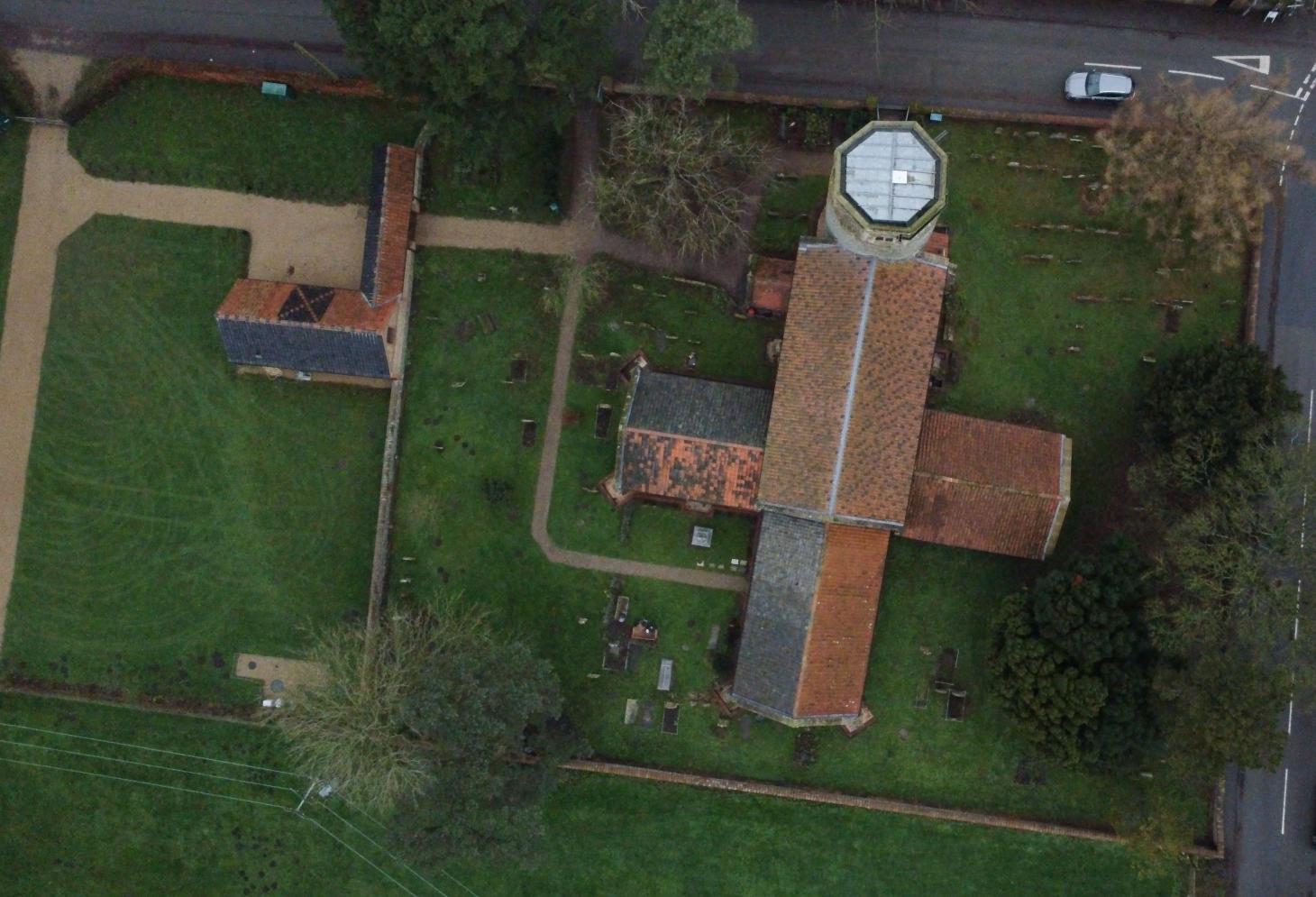
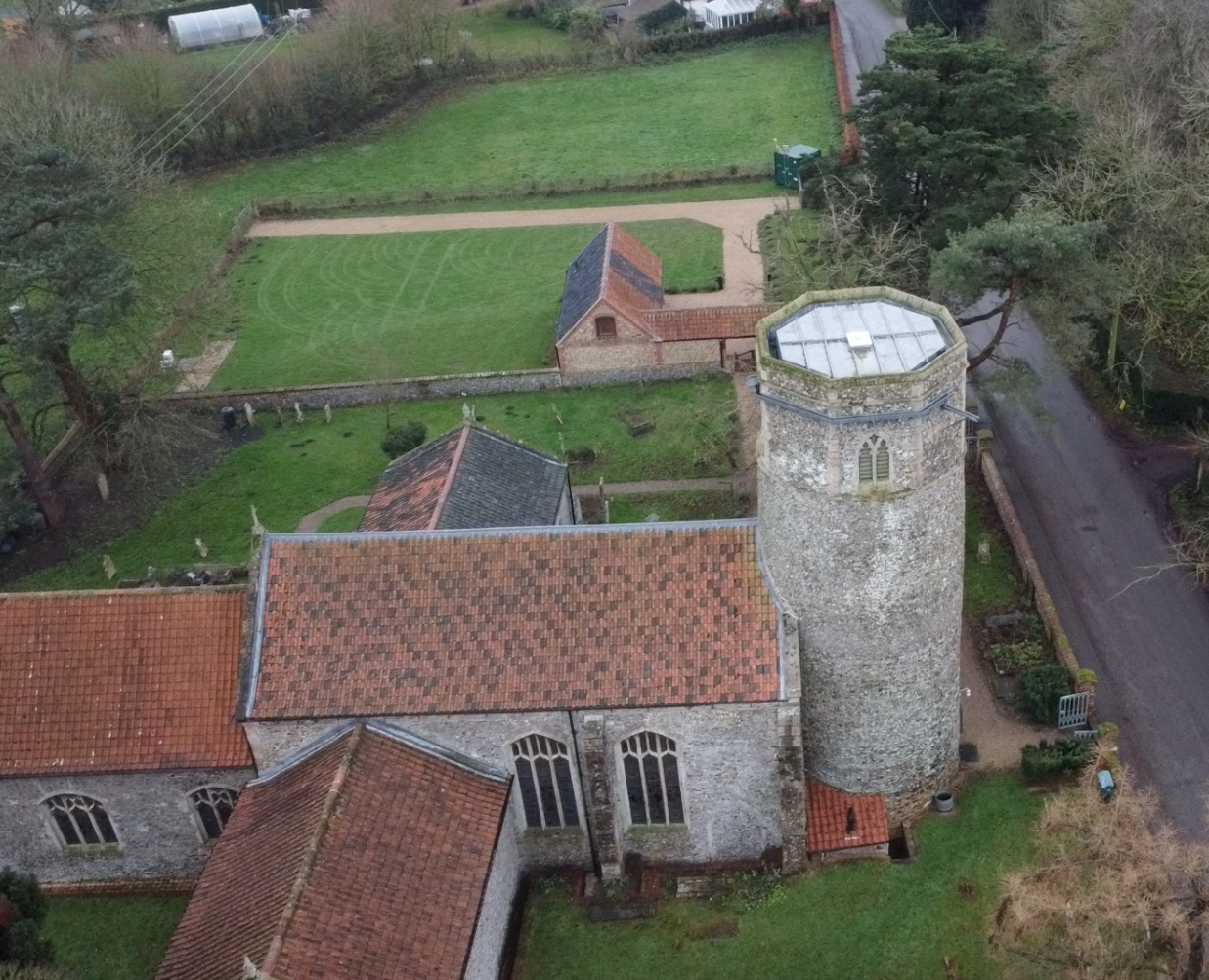

The North Belfry opening with is "cusped y" tracery before the Tower roofing work:
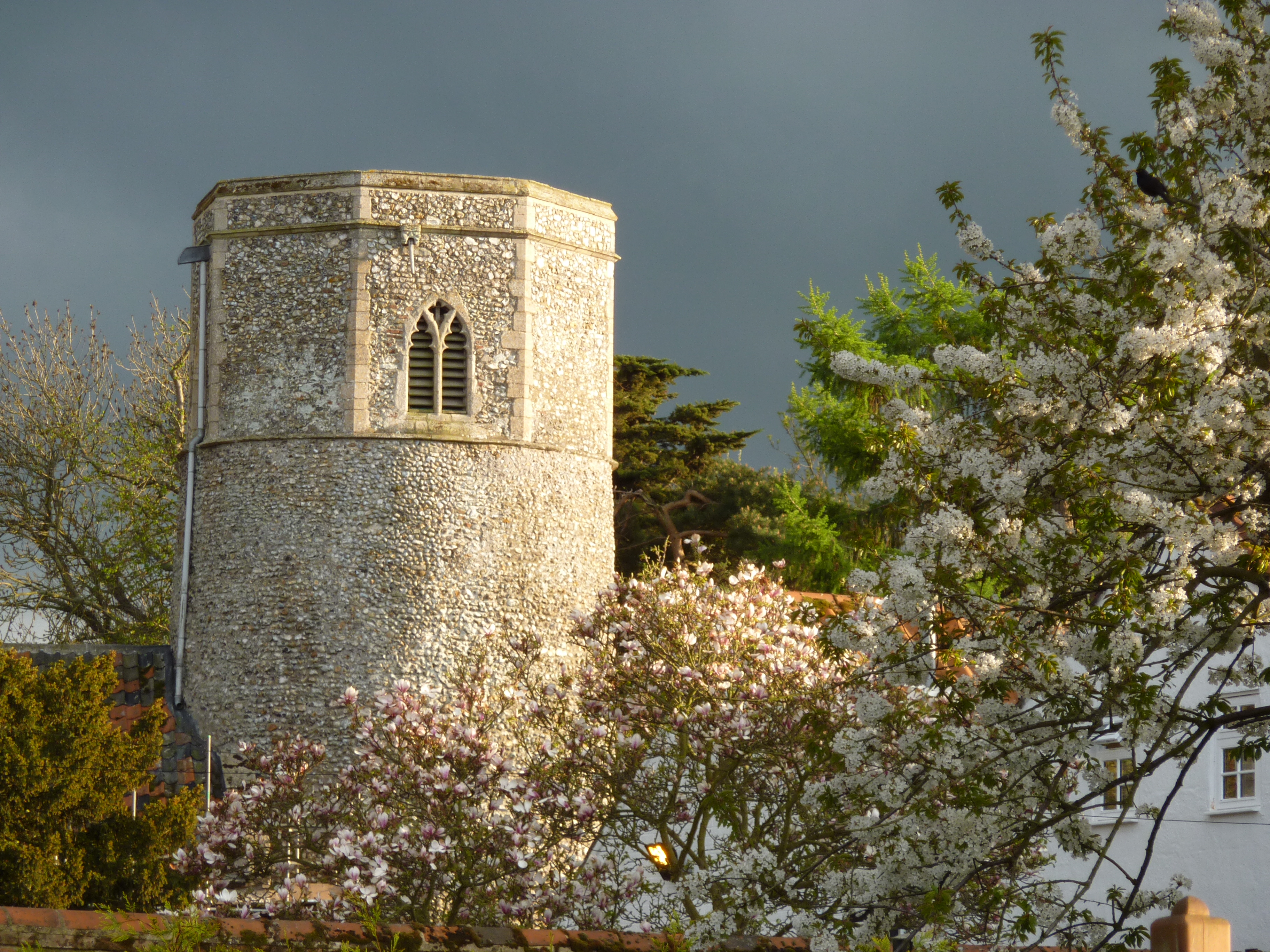
Images of 15th Century Brickwork in the West Belfry opening and Octagonal belfry:
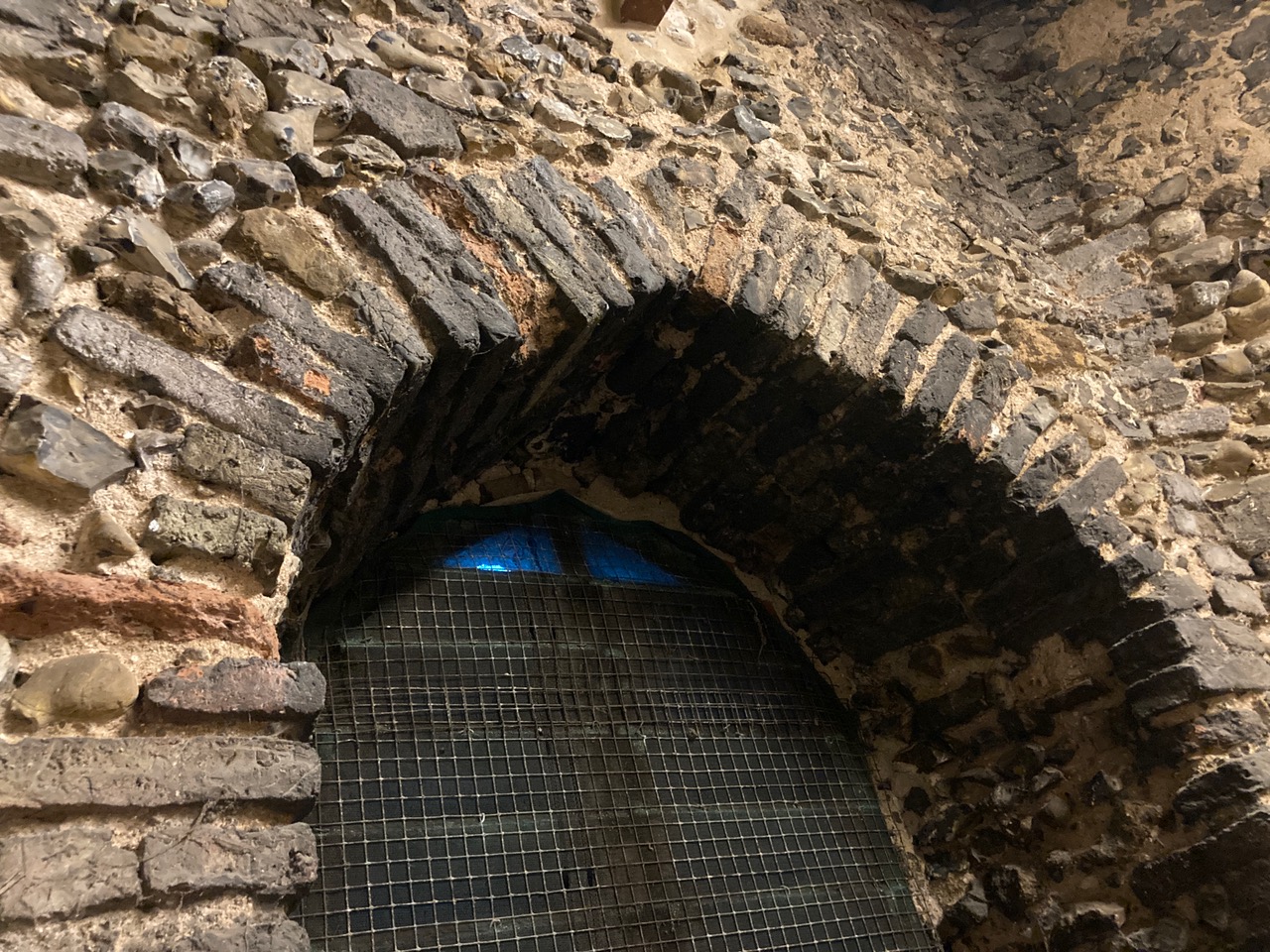
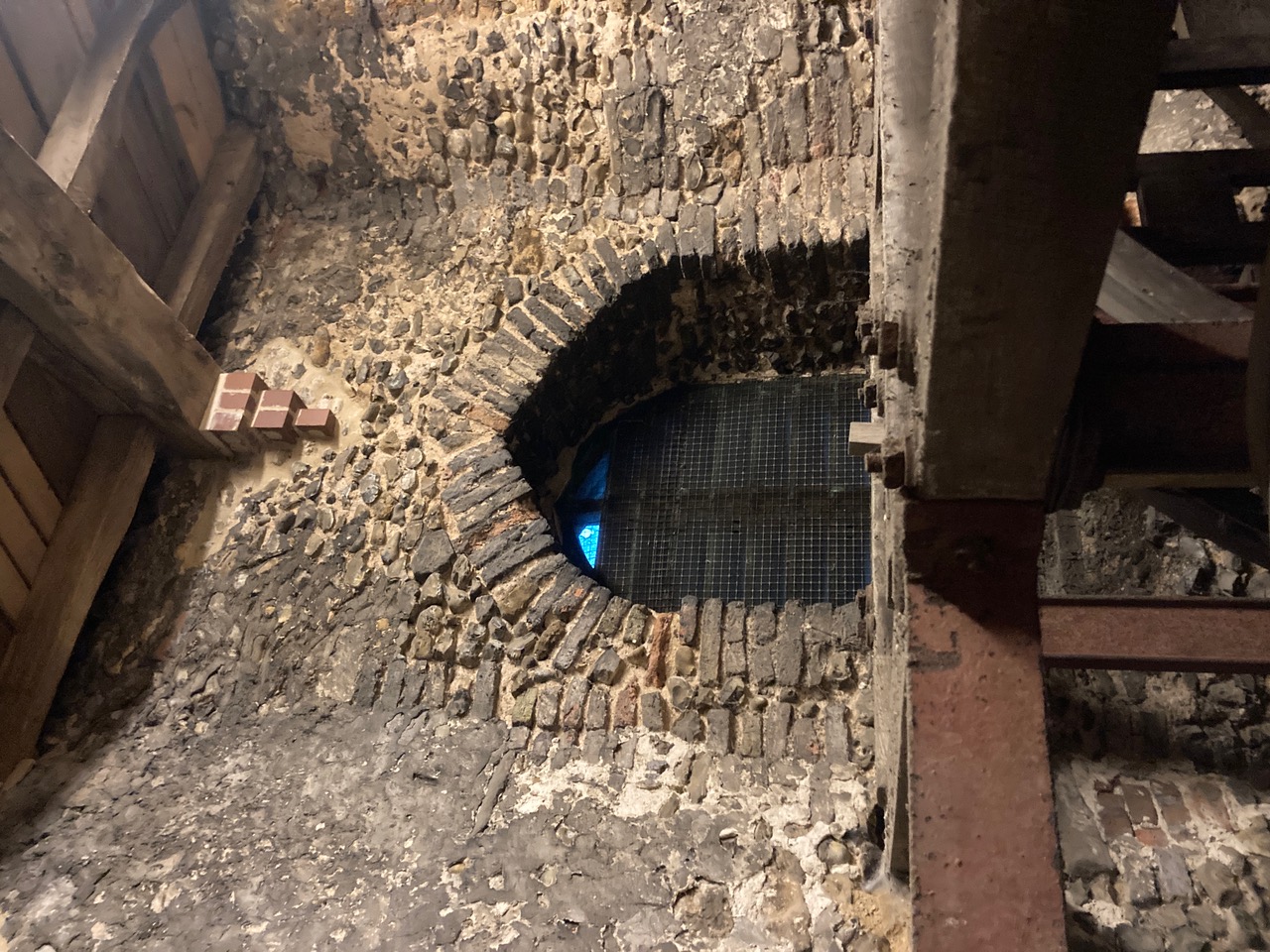
Putlog hole of the C15th sometime used by nesting birds:

Putloghole from original building of wall:
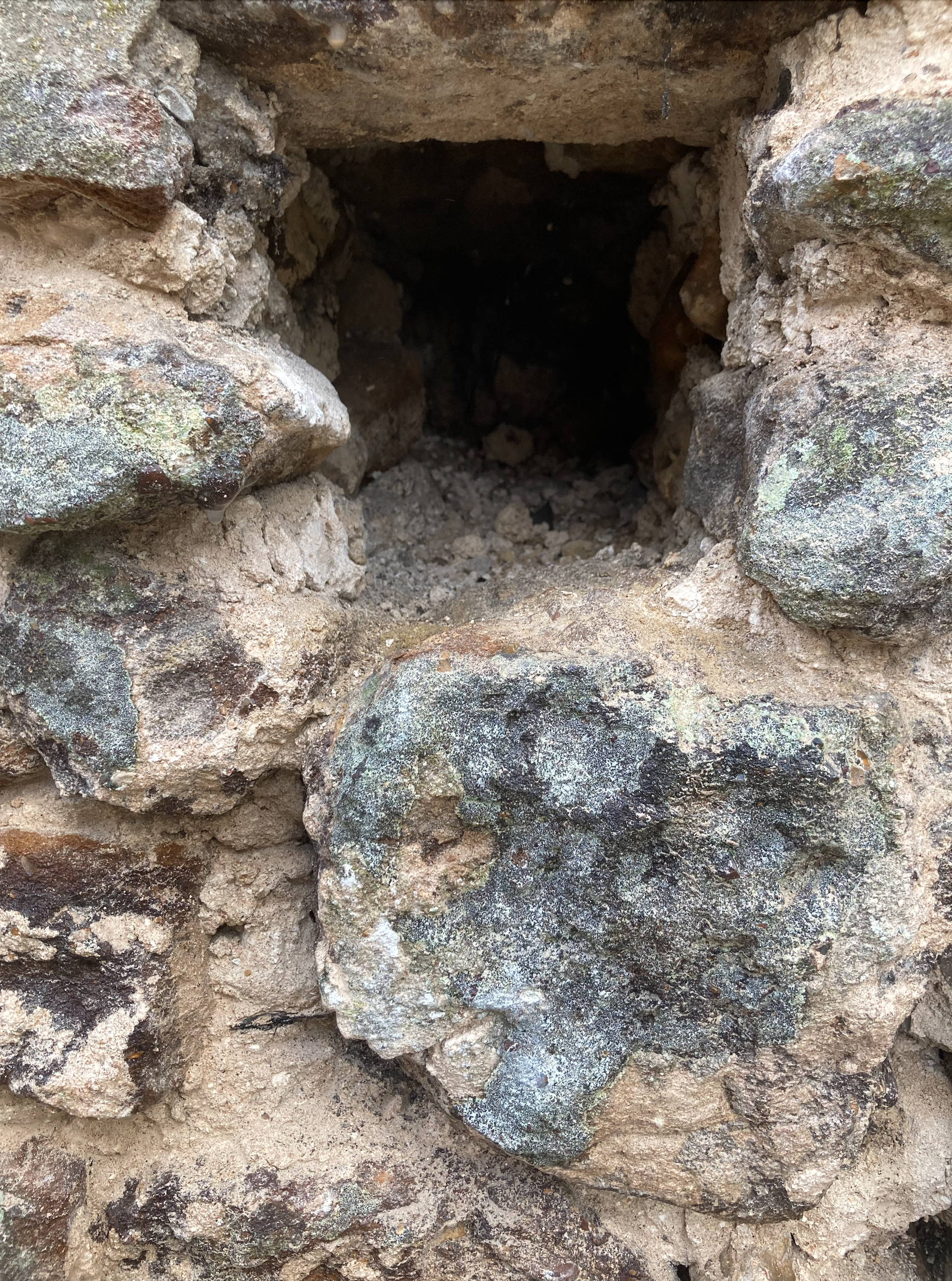
Different mortars within the walls:
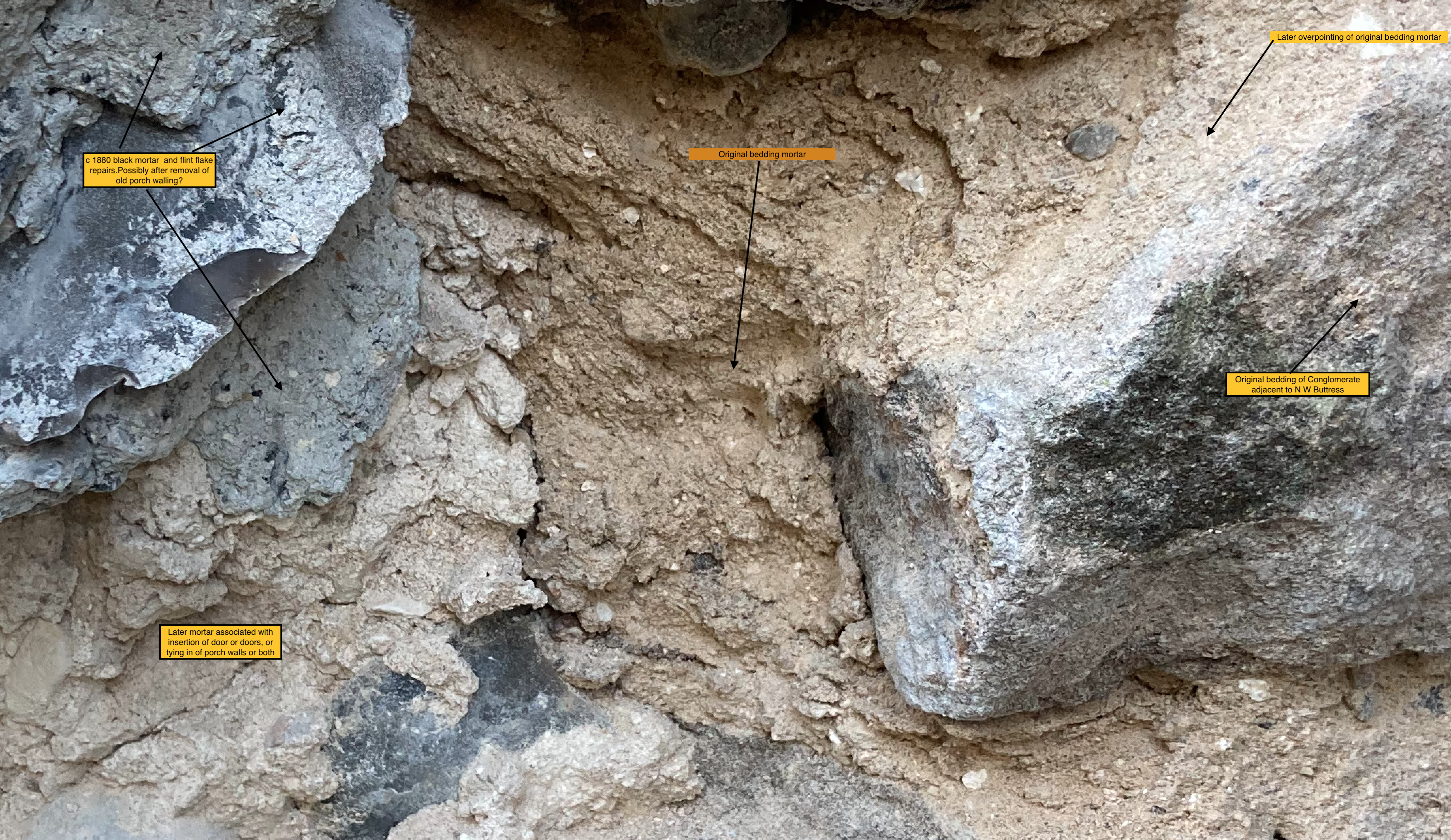
********
June 2024
From the Bell Tower:
In the past I have written of my delight in finding various images of past Ryburgh inhabitants,
George Tatham, Morris Fuller and Thomas Buttes to name but three. This week I found the most
unusual source (for me at least) of an image or at least an identifiable representation of a long past
incumbent of whom I suspect very few people will have heard. We can find a name inscribed on
the vestry screen in St Andrew’s, that is to say Richard Harris, who was Rector between 1568 and 1572.
Or, as would be described in texts of the period between the 10th and 14th year of the reign of her
Sovereign Majesty Queen Elizabeth by the grace of God Queen of England, France & Ireland
defender of the faith etc.. It was when looking at folio 30 of the British Library Additional Manuscript 39227
that I came across this image. The page has Richard Harris’ account for the payment to Thomas Buttes,
Lord of the Manor, of 26 shillings and 8 pence (in old money). This amount was “of all & for such his Tythe
woode and lambes due for this whole yeare” and dated 1st August 1570. Obviously the image was not
photographic but neither was it a drawing or painting. It was what today one might even call an avatar
and it appears alongside these words at the end of the Bill: “In wyttnes whereof I have Subscribed my
name and Sett my seale to this p[ay]ment with the daye and yeare firstlie Abovewritten. by me Richarde
Harries Clarcke” And there below was his Seal on what looks like a separate piece of paper stuck down with
sealing wax.
: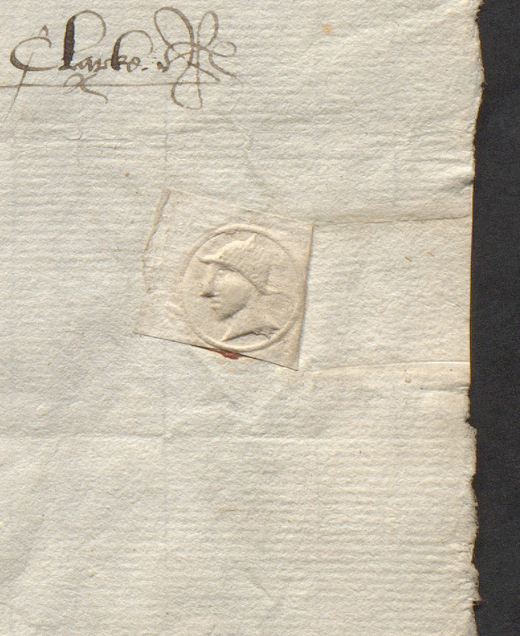


During the course of producing content for these webpages, I have had the very good fortune to have corresponded with a
number of people who are experts in their various fields and in this case I consulted Christopher Whittick who explained things to me
in several emails which I summarise below:
"These things are not uncommon, and emerge as soon as documents on paper that need to be sealed. Normal sealing practice -
on a strip hanging from the document - works with parchment but not with paper. So originally the seal was impressed onto wax
with a sheet of paper over it - sealing en placard - and by the 16th century so many more such documents were being written
(or perhaps surviving) at lower levels of administration that they devised the idea of turning a flap of paper over from the margin
of the document and sealing it in the manner of your examples. Only later would the wax be applied directly to the paper."
As for the image i.e. the matrix, my first thought was of a felt “peasant" hat combined with “stalk” on a zuchetto such as I thought
I had perhaps seen in Breugel, Bosch or Durer or perhaps some particular clerical headgear, but I could find nothing to match.
Whatever the case one would think that such a personal stamp might be designed in some way to represent the owner to the world.
Christopher replied:
"The image reminds me of representations of Mercury in a petasos (ancient greek sun hat). The matrix for the Mercury seal might
have been specially commissioned, but by this date I should say, is more likely to have been bought off the shelf"
At least such a seal would convey the idea of a man cultured in the classics...... so perhaps avatar is just what it was in C16th. terms.
It does make one realise just how many of the everyday things of ordinary people from the past have been lost.....as I suppose they
continue to do today....now where did I put that hole puncher... I'm sure I had a paper copy of this somewhere that needs to go in a folder!
********
July 2024
From the Bell Tower:

Many of you will be familiar with the Vestry Screen in the North Transept at St. Andrew’s
but if you are not it is a fixed screen of wooden panelling with a door, centrally placed, to
access the vestry. It was installed in 1924 originally to provide vestry space, (which
previously had been in the base of the Tower) in the south end of the South Transept.
Across the top of the Screen we read “In memory of Charles Meaburn TATHAM Patron of
this Living Born 1828 Died 1924”. The panels show the following in gold lettering on the
dark brown wood:
1. Rectors of St Andrew, Great Ryburgh,
2. Patrons of St Andrew, Great Ryburgh
3. Rectors of St Remigius, Testerton
4. Vicars of All Saints, Little Ryburgh
5. Bishops of East Anglia
6. Vicars of St Helen, Gateley
7. Patrons of St Helen, Gateley
On the face of it, this is just lists of those owners and incumbents of these various parishes
with the Bishops thrown in for good measure. However, on consideration and after a little
research, the names and dates start to tell a broader story especially when you compare
them with other documentary evidence such as parish registers and manorial documents.
The 94 years spanning 1449-1543 represent the influential input (wealth) of Walsingham
and it is during that time the external dimensions and features of the building reached the
state of what remains today, most notably, the taller walls and windows.The Dissolution of
the Monasteries and the see-saw changes of monarchs, Protestant to Catholic and back
are manifest in the tenures of the Rectors of the era.
Roger Overey, presented by Dr. Sir William Buttes in 1543 was incumbent during the
reigns of Henry Vlll and Edward Vl and was deprived of his living in 1554 when Mary
acceded. He survived the upheaval and went on to be Rector of Sloley. William
Startweyte who died in February 1558/9 was appointed by Thomas Buttes (now Lord of
the Manor) during Mary’s reign and upon her death, Butts appointed William Seton, who
died in 1566.He was the first Rector of Ryburgh in the reign of the new Queen Elizabeth. It
is possible that Seyton’s brother John, a significant beneficiary of his will, was none other
than the chaplain to Archbishop Stephen Gardiner, Bishop of Winchester and Lord
Chancellor of England during the reign of Mary Tudor. Gardiner was the man who placed
the Crown of England on Mary’s head at the coronation and sat in judgement on the soon
to be Protestant martyr, Bishop John Hooper. Whether or not this was a factor in the
subsequent appointment of Richard Harris in 1568 by Queen Elizabeth I can not at this
point ascertain, but the appointment of William Seton was probably not the best way to
ingratiate oneself with the monarch but not in itself proof of Buttes’ adherence to the old
religion of his youth.
There was certainly an interregnum of nearly two years during which time the Vicar of
Little Ryburgh John Heathe filled the gap until the arrival of Richard Harris, he of the
Mercurial seal of last month’s column. In the record keeping of Thomas Buttes, Harris
turned out to be something of a financial disaster area. There are two pages listing the
debts of “the sayd R Harrys” in 1572 amounting to £83-6/-8d., a very considerable amount
to have accrued in such a short time. Whether he too was deprived of the living I have not
yet been able to ascertain but it is possibly he who turns up as Vicar of Stallingborough in
Lincolnshire in 1576. Perhaps because of this or because Buttes was sufficiently
rehabilitated in the eyes of the new Protestant regime, he resumes his right of presentation
with the appointment of Christopher Wilson. Coincidently, a certain Chris Wilson, was
deprived of the living of Hethersett upon Mary’s accession but it was not he that Buttes first
appoints. Aside from that, our Christopher Wilson Clarcke bequeathed his lute and lute
book to his brother Simon on his death, and consequently I have a soft spot for him! As for
his widow Caterine, she was presented with the terms and conditions of her notice to quit
dated the day of her husband’s burial!
This led to Buttes’ final presentation from his time in Ryburgh, that of Thomas Waterman,
with whom he had a most confrontational relationship...to the extent of Waterman’s
grievances being presented to the Court of Chancery before Sir Christopher Wraye, the
Lord Chief Justice and Edmond Anderson, Justice of Assize with the County of Norfolk.
They deferred the case to local J.P.s William Heydon (on whose recommendation
Waterman was appointed in the first place) and William Rugge of Billingford (a friend to
whomButtes bequeathed “one starr riall to make hym a ringe and my pockett dagge with a
white hefte” in his will. I have yet to find the final ruling on the case but it was after this
acrimonious litigation that Buttes left Ryburgh Hall to live out his remaining days in Catton
whilst Waterman continued as Rector of Ryburgh Magna for more than 30 years after
Thomas Buttes died.
********
August 2024
From the Bell Tower:
Given that the church is probably over 900 years old, it is inevitable that the building has
undergone many changes in that time. Consequently, it is not that straightforward to
imagine what the church was like at any period before the 161 year input of the Tatham
family from 1858 on. However, George Tatham, through the local press, describes a rather
rundown Georgian church “defaced” with box pews, and an “unsightly western gallery”,
10 blocked up windows, and plastered ceilings….. He and his family money turned the
church into what we see today.
But what did happen during those other 700+ years and how can we find out? There are
clues all over the building, some of which can be explored more easily than others.
One thing George Tatham doesn’t mention was the annoying ancient tomb that prevented
him from getting his brand new Gray and Davidson Organ against the north wall of the
chancel in 1864. It was apparently nothing that a heavy hammer couldn’t cure, with the
result that he salvaged the pertinent bits and chucked the rubble in the floor for his son
Hugh to find 50 years later!
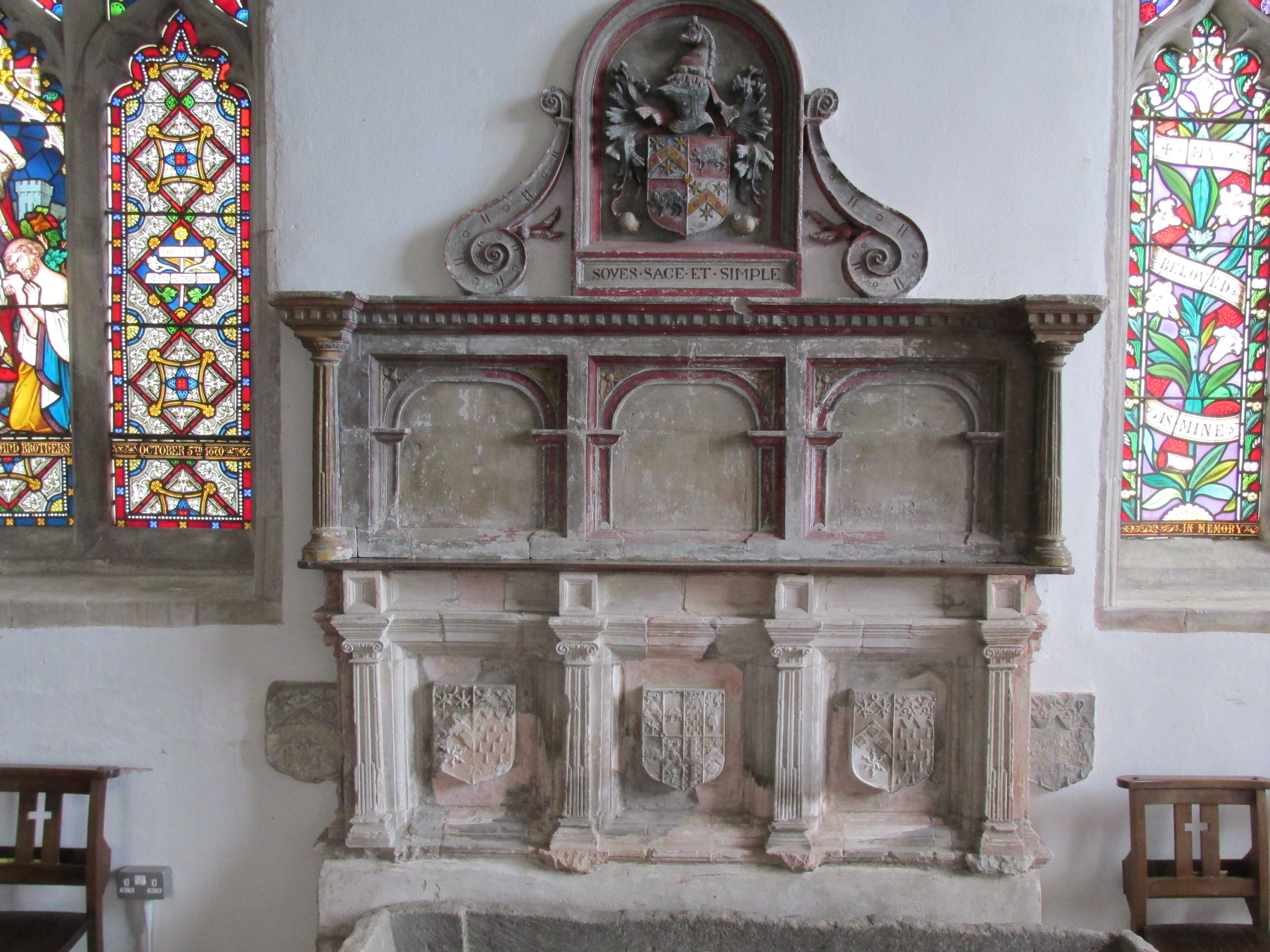
Bridget Buttes' tomb at Ryburgh
Fortunately a Georgian Antiquarian called Tom Martin had visited the church in 1758
when it still had a North and South porch and the roofs ”all leaded” except for a thatched
roof to the Chancel although it was not “ceild” which hedescribed as “shameful”.
He also sketched the ancient tomb and a number of other remnants of the era of the
tomb including paintings to the walls. The tomb had been erected by Lord of the Manor,
Thomas Buttes when his wife, Bridget Bures died in 1570.
Fortunately we can get a better idea of what it was like by visiting Thornage Church where
the later tomb of Thomas Buttes’ older brother, Sir William Buttes (d.1583) can be seen
with much more of its colour remaining.

Sir William Buttes' tomb at Thornage
We are now right in the period of the Rectors of whom I wrote last month and according to Tom Martin:
“In the window at or near the head of this Monument (west end) is a broken figure of a
Gentlewoman with a Coif and Ruff etc (the habits of that time) and over it these figures 1579”
There were just three burials registered at St Andrew’s in 1579 and none of them would
be of a “Gentlewoman”, so I suspect Martin had misread 0 for 9 which would make this far
more likely to be a now lost image of Bridget (Bures) Buttes. Martin also, in spite of having
described the tomb as being on the North wall, drew it on the South side of the chancel
on his rough outline plan. So one has to always question and check!
By putting just few of these things together, you can start to visualise the 16th Century
interior of St Andrew’s with a little more clarity. That clarity in no small way being down to
Thomas Buttes when he writes:
“I have also glased at myne owne proper cost and chardge all the windowes in the Chauncell,
which ar in noomber. v. & those verie large & greate, which did cost mee with the scripture written
within the said Chauncelles wales more then xx li.”
Those same windows are still there, but filled with the coloured glass of the Tatham era.
Buttes statement when he writes of his “owne proper cost” implies that as Patron, such a
task was his responsibility, an obligation which was in practice, if not by then necessarily
in law, continued by our Victorian forbears.
Tom Martin goes on to describe thus : “The two crests (Bures and Buttes) are in many
Quarries of the glass, both in Church and chancel…In the South Transept on the South window is
painted BVTTS*BVRES 1572, plus drawings of many crests of wyverns and unicorns, above this
is represented a pelican vulning* herself and her young ones in a nest under."
"under the window is an old arch in the wall" (The Aumbrey which is still there).
The glass of the east and west South Transept windows described as having Buttes’ Coats of Arms and
his initials T B together with “crests of horses heads…many crests of Knags heads interspersed and
wyverns , …many of the unicorns heads”. The North transept North window “very old” had two coats
of arms, different and older still than those which survive today and no longer with “crests of dragons
or wyverns” and “on two east windows many crests of unicorns heads”
*To wound (oneself) by biting at the breast. Used as a heraldic motif and symbol of Christ,
the pelican, was once believed to feed its young with its blood.

Wyverns in the glass at Thornage
What a very different church it must have been in the 16th. Century……and were there then in use elaborately carved
15th. Century pews?……that we are unlikely ever to know.
********
September 2024
From the Bell Tower:
Returning to the Vestry Screen in the North Transept and its list of
Ryburgh Rectors it is now apparent to me that there is a glaring
omission. In fact, in excess of a dozen very significant omissions, which
perusal of past St Andrew’s Registers very soon reveals. This is of
course not the fault of the compiler of the names, for all these men were
presented to the Rectory as recorded. Having said that, just because
you were nominally the Rector didn’t mean you carried out the day to
day running of the Parish although clearly some were certainly hands
on full time. Here I would cite Samuel Rye and Francis Burton in the
2nd and 3rd quarters of the C18th. who seem to have personally run
the Parish. In 1750 Francis Burton buys into the vicarage of Little
Ryburgh which was by then a ruin and All Saints, Lt Ryburgh is
thereafter consolidated with St Andrew’s.
It is after Burton’s death in 1758 and for the next 100 years that
Curates to the greater degree run the Parish, take the services fill in the
Registers and live in the Parsonage House.
The Revd. William Norris served the parish for 20 years as curate, from
1759 at the start of Rector Edward. Smallwell’s brief tenure and
continuing into the 60 year incumbency of Charles Morduant who was
also Rector of Little Massingham. Norris was followed by Curates John
Christian, William Erratt, Love Robertson and Josiah Webb Flavell who
covered the last 17 years of Morduant’s tenure1803-1820.
Many of our Curates were, as one might expect, at the beginning of
their ministries before being presented to a living in their own right
However before we start chuntering on about absentees we find that
sauce for the goose was also for the gander: William Norris would seem
to have been concurrently Vicar of Impington, and Rector of his own
living of Riddlesworth and Gasthorpe, John Christian was Rector of
Knapton and Josiah Webb Flavell was Rector of Stody from 1801 until
his death in 1848.
The next Rector from 1820, Willliam Ray Clayton, started off with good
intent and was responsible for building the current Rectory on the site
of the previous dilapidated parsonage house of Thomas Buttes’ era. He
then seconded the help of curates from 1832 until his death in 1858.
For the last 10 years of his life he substantially handed over the running
of the parish to recently married Augustus Barker Hemsworth in 1848.
Ordained in Norwich in 1846, Hemsworth was curate of Stow Bedon
and Vicar of Breccles until 1850 when he also became the perpetual
Curate of Thompson until 1858.
As these things do, two separate letters/envelopes from Hemsworth
have survived the centuries, due to the stamps more than the contents.
The first a letter from January 1857 deals with a sum of money that had
been invested in his name and the second just the envelope from 1858
which has written on the back “Augt 20/58 Title to Advowson of
Bacton”
On leaving Ryburgh it is to Bacton in Suffolk that he presented himself
as Rector until his death in 1889.
The Illustrated London News prints the following Testimonial in 1859:
“The parishioners of Great and Little Ryburgh have presented to the Rev
Augustus Hemsworth a handsome silver cup richly chased with rose,
shamrock and thistle, gilt inside, bearing on one side Mr Hemsworth’s
coat of arms ; on the other the following inscription:- “Presented to the
Rev. Augustus B. Hemsworth , as a mark of esteem , by the parishioners
of Great and Little Ryburgh, on his leaving them A.D.1859”
The local papers also add that they met at the National School Room,
gave the date January 15th 1859, and report that
“the cup, value £11 10s.6d. being presented by Mr J Bell,
churchwarden, the rev gentleman thanked the subscribers in short but
very appropriate and affecting terms”
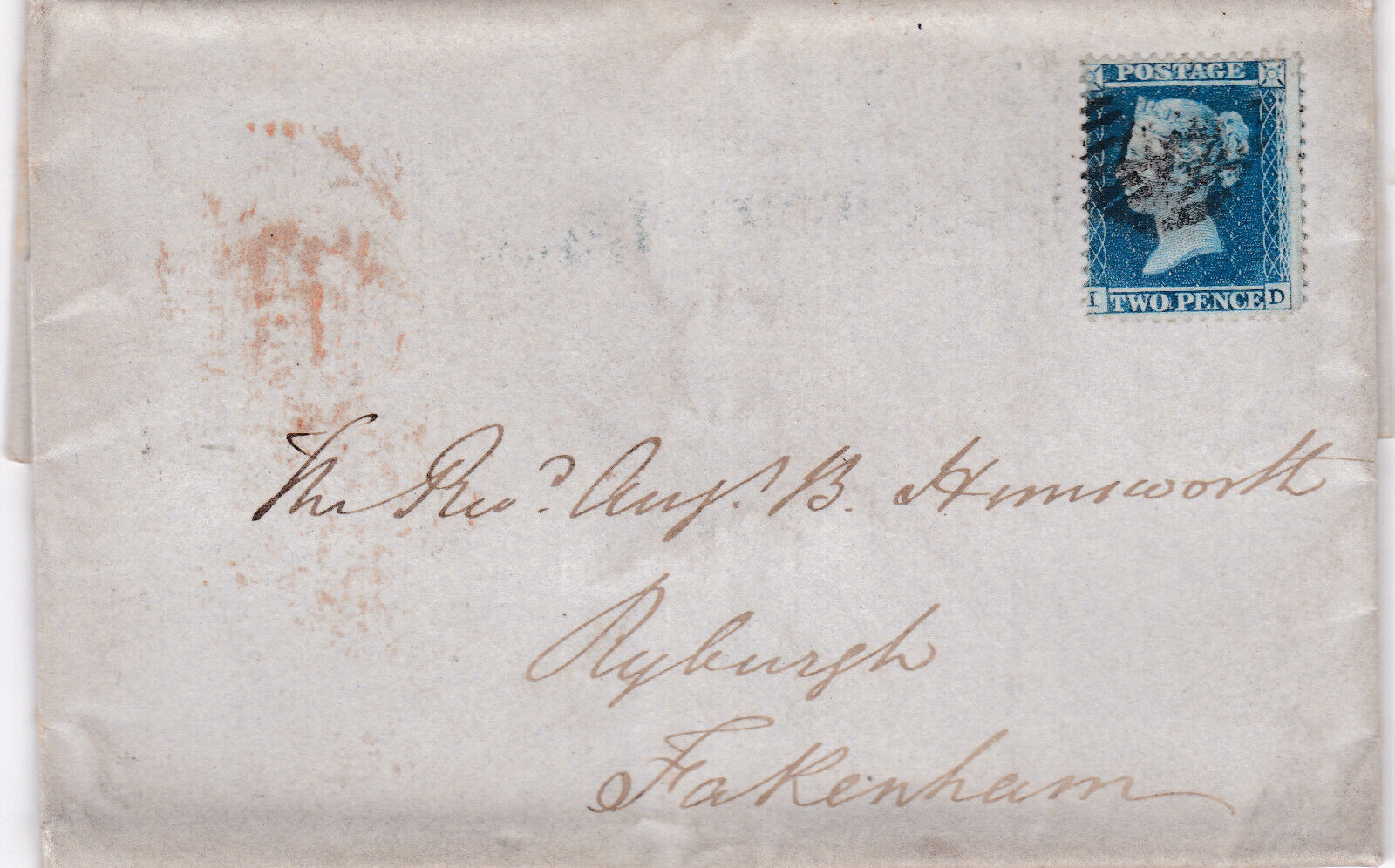
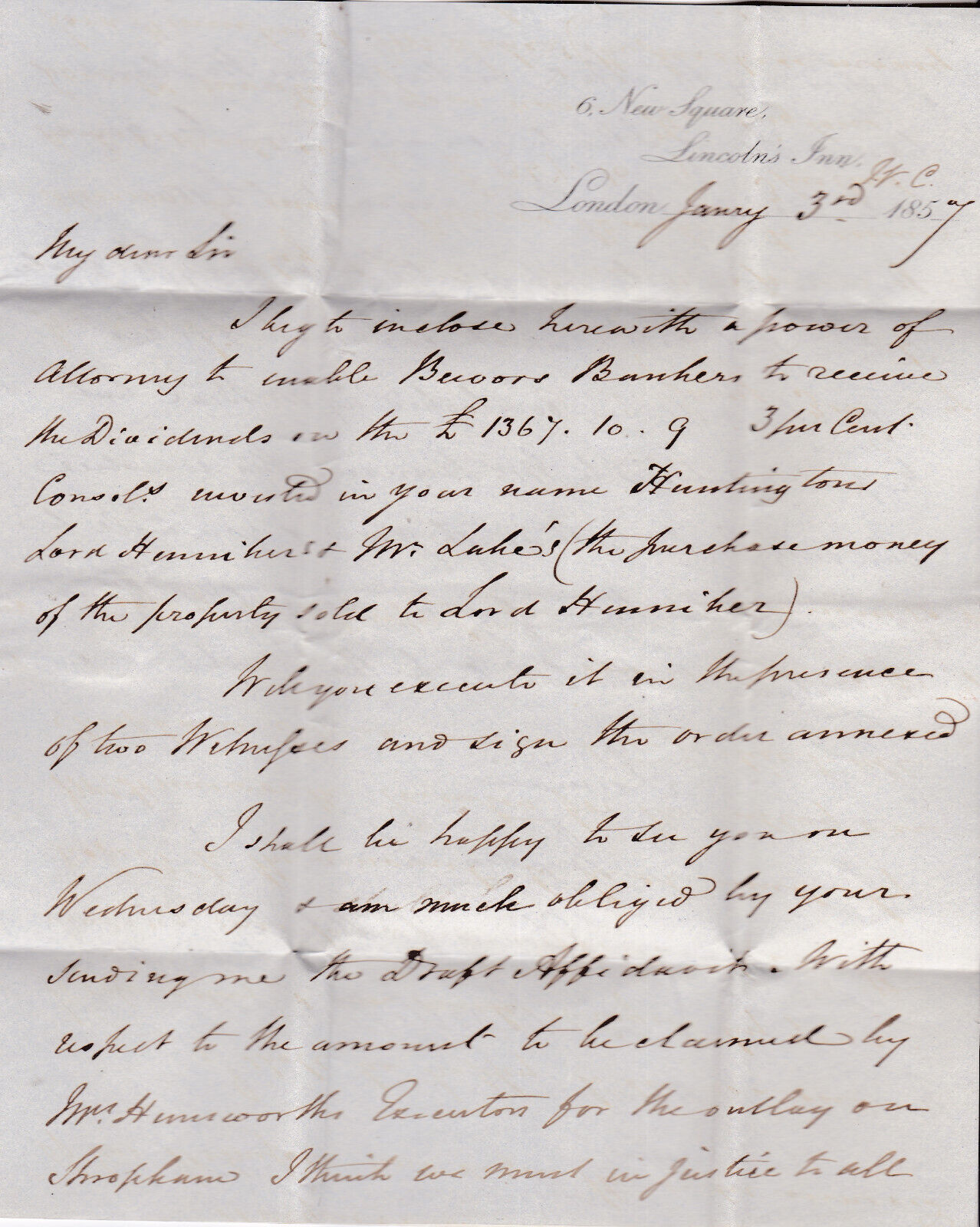


********
October 2024
From the Bell Tower:
As the annual day of Remembrance draws near, the recent visit to St Andrew’s by Corin Greenhow,
an actor from Essex on a Harley Davidson became the catylyst for this months observations. The
purpose of his visit was to see the village, and more to the point the place therein where his Great
Grandfather, Herbert Love had been billeted during the early months of WW1. I was only able to speak
briefly with him, but sufficiently so to be able exchange email contacts and direct him to the said billet.
Knowledge of this place came from a printed page that he showed me on his phone, of a
reminiscence /diary that described Pte. Love’s experience in Ryburgh during his posting with the
Royal Bucks Hussars who arrived, en masse, to Ryburgh and surrounding villages on Tuesday
17th. November 1914. It is yet to be clarified as to the exact nature of the document I saw but it
described the billet thus:
”the 2nd (Troop)were at Mr. Savory's farm one and a half miles the other side, where
Clarke and most of the men lived and which by much manual labour on their part and Mr.
Savory's kindness in supplying timber eventually became quite good stabling.”
John was delighted to meet our visitor and to see first hand the interaction between their
respective Great Grandfathers 110 years ago.
References to the placing of the other 3 Troops were not all quite so favourable and his
general opinion was that “on the whole (Ryburgh) was a bad billet” .
Opinions obviously are bound to be personal and differ which is why Owen Whitlock so
enjoyed his time here he married Beatrice May Long, the daughter of William and Sophia
Long of Little Ryburgh. Owen returned there after the War to farm at Blue Tile Farm.
Whatever the RBH’s point of view, Ryburgh School Headteacher, Albert Foster saw fit to
pen the following to the “Buckingham Advertiser and Free Press” under the heading:
The Royal Bucks Hussars at Great Ryburgh
AN APPRECIATION
The Royal Bucks Hussars reached Ryburgh, much to the delight of the villagers, in the
darkening days of last November, when the shadows of a German invasion lay across our
daily life. After the Yarmouth raid, we near the Norfolk coast were beginning to think that
there may be a more serious repetition of it, and to ask ourselves if we were to be the bait
for an attacking force, and what our fate would be in the path of the hateful Hun.
Ryburgh-a village of about 600 souls-had lost a lot of its lads, a tenth had joined up for
service, and it had become sadly silent, when one morning the advance part of the R.B.H.
regiment arrived. By mid-day A Squadron,looking terribly tired, lined up along our street,
and billeting was soon in full swing. Everyone was delighted that at last we had some
soldiers who were prepared at a moment's notice to ward off the threatened blow, and
from that day all our anxiety vanished absoIutely.
Immediately everything was life and bustle. mirth and merriment went hand in hand.
The men settled down to village life, and brought to us a long-wished for change.
Concerts were frequently given by the troops. and were immensely appreciated. Dances,
too, were well attended. Night alarms brought no fears. Everyone felt safe behind the
swords of the Royal Bucks Hussars.
Thus the weeks flew by, and in every hour fresh friends were found. The clatter of
horses hoofs, the flash of swords, awakened now life by day, whilst evening brought its
round of "cards " and "ragtimes" Happiness rode on a high horse and the months fairly
flew.
But March came with rumours of remoral, and Easter sasw speedy preparations for
embarkation. We did not realise, however, until the last day what a sea of sadness was
about to sweep over us, what an aching void would be left behind, for the R.B.H. had crept
into the affections of us all, and to say “Good-bye” was to wring with a wrench the very
heart strings of those who had made a home for the gallant fellows.
For the first time the villagers lost from every home someone who was more to them than
they ever thought. They saw them marching out of their care and keeping off to the war.
"Were we, downhearted"?. Yes a hundred times " Yes." Throats were too choked
for cheers, and eyes were too dim for anything but tears. Only the sun looked down and
smiled a our thoughts went away to Buckinghamshire, to the fathers and the mothers, the
sisters and the brothers, the sweethearts and the wives of the Royal Bucks Hussars-theirs
always ours once.
They marched away about four o'clock in the afternoon, and as the darknees fell B
Squadron came clattering down the lane, singing snatches of songs, cheery and bright. C
Squadron passed through in the dead of the night. and we woke to the strains of "Lindy
Low, breaking off into "Hear we are- Here we are-Here we are again." How they sang-and
they could sing and their voices died down in the distance.
Our prayer is that they may have a speedy return to their native land: and should they ever
return to Ryburgh they will find a warm corner of our hearts reserved for them.
A. F.
Ryburgh. April 12th. 1915.
John and Highfield kept Albert Foster’s promise and with that promise we remember on
November 11th Private 1684 Herbert Love of the Royal Bucks Hussars who died on
August 21st 1915 at Galipoli leaving a wife Margaret Ann and two children, Ronald Herbert
Love and Violet Margaret Love.

Herbert Love
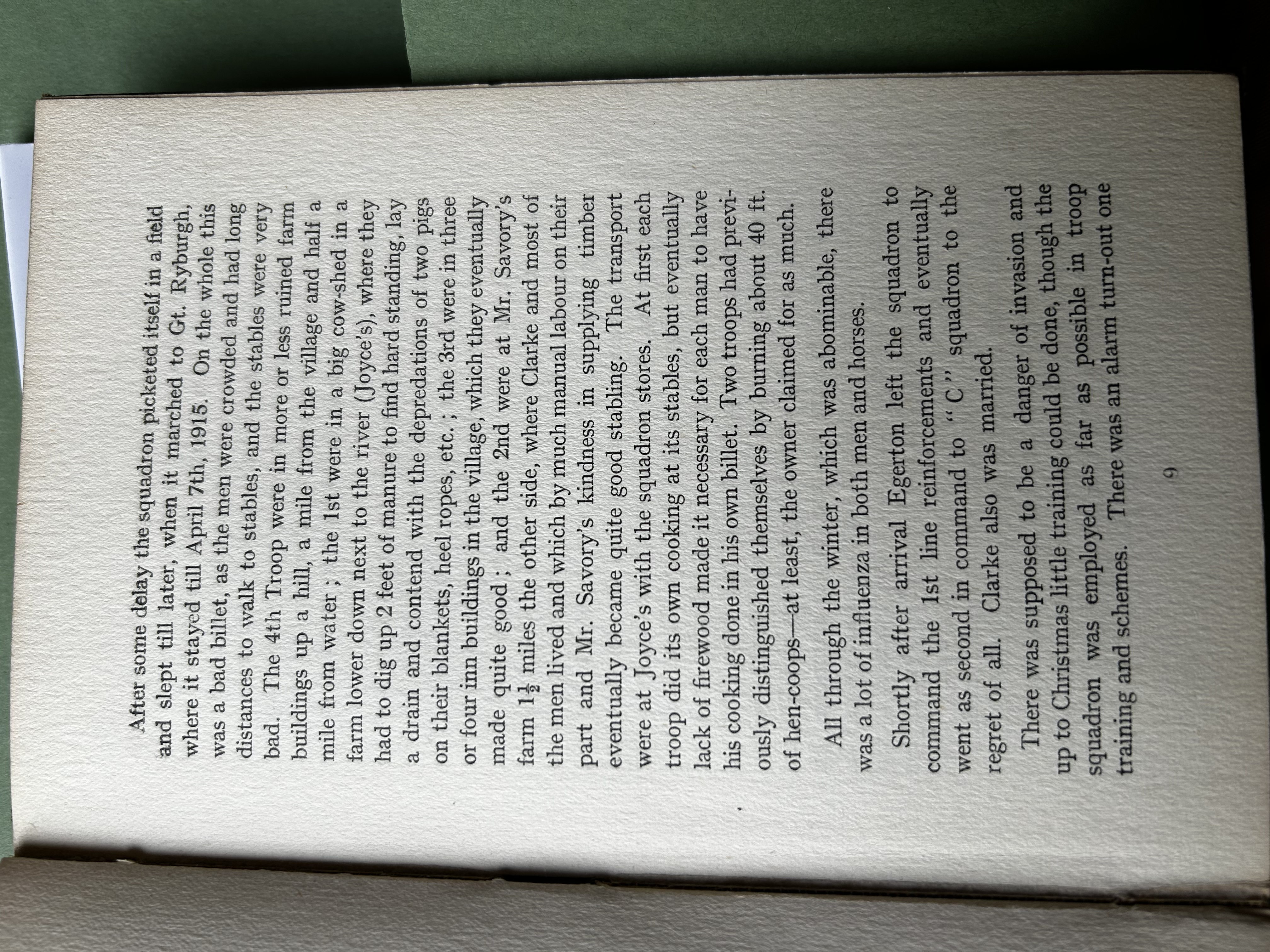
A page from an unknown publication kindly sent by Corin Greenhow after his visit to Ryburgh
********
November 2024
From the Bell Tower:
Not long since, I described a picture of the interior of St Andrew’s at various points in time.
The exterior, on the other hand, has very little representation of the building much before
the advent of photography and the proliferation of post card images. The most notable
exception is the lithographic print by J B. Ladbrooke published in 1832 where we plainly
see the boundary fence to the churchyard running north from the E. corner of the N.
Transept across to what is now Bridge Road. This feature is corroborated by the drawing
of church and churchyard on the Inclosure Map. More striking to me is the depiction of two
Norman windows with their central pillars in the East wall of the transept which must have
been removed at some point in the ensuing 50 years to house the George Smith memorial
stained glass windows by William Wailes that we see today. The Ladbrooke print
nevertheless shows a building that is immediately recognisable as the church we see
today and yet in its 900 or so years of existence the building most certainly hasn’t always
looked like this now 200 year old image. Clues as to St Andrew’s earlier manifestations are
all about, some easier to see than others but I have to admit that working on the fabric of
the exterior of late has given me privileged opportunity to examine some of the less
apparent bits of evidence, and which following repointing and repair will not been seen
again for a considerable amount of time.
The most striking example concerns the North Nave doorway dated by Edwin Rose, in his
1989 Norfolk Landscape Archeology Monument List Report 7132, to the early C13th. The
cleaning back of the face work above it revealed a rough conglomerate relieving arch as
elsewhere seen in the East and North walls of the Chancel and at first I assumed it to be a
feature of the original building. However, the clearing out of loose and damaged stone
back to a stable substrate showed clearly that the conglomerate had been reset in a
bright white mortar against the earlier browner and coarser mortar of the core and
therefore much more likely to have been a part of the work required for the insertion of the
North doorway below. Further cleaning of the infill work in the doorway itself between the
dressed stone exterior facing of the door framing would indicate a late C18th early C19th
date, i.e. that it has been blocked up for just the last 200 years. Unfortunately the
Ladbrooke print does not show this area of the Nave at all!
Over this time, areas adjacent to the jambs and intrados of the arch had suffered collapse
and been repaired both in lime and cement mortars. The earlier cement repair was mixed
with a brown sand and the other later with a much lighter aggregate but both had a very
high cement content. After this had been removed the full extent of the moulded arch of
the doorway was revealed and shown to be far more elaborate and in a generally crisper
condition than that of the South doorway. It even still retains the remains of limewash
from a time when it was inside the protection of the North Porch The existence of a porch
to this doorway was reported by antiquarian Tom Martin when he visited Ryburgh in 1758.
Unfortunately, at some unknown point, in an act that would today be considered as
wanton vandalism, the drip mould, which was a feature of the outer face of the arch
perimeter complete with label stops, has been comprehensively chiseled off back to to a
surface roughly flush with the surrounding wall. This may have coincided with render
repairs most of which have now perished from the Nave wall but on the face of it, it
seems an unjustifiable act. A very large stone together with smaller blocks form the cill
height of a floor level of a later date than the insertion of the door where the cill level is
about 9 inches lower. This is the “original floor level” that was integral to Hugh Tatham
and Comper’s 1910-12 reordering of St Andrew’s. Both North and South entrances were
dimensionally very similar in spite of the now very different arch details. It is certainly not
without the bounds of possibility that the South doorway was modified to take an
externally hung wooden door and frame, the remnants of which can be seen today as you
go in to the church. I hope the accompanying photos illustrate and explain my excitement
at finding this hidden treasure.
To follow shortly:
1. North Nave wall showing feint outline of blocked North Doorway.

2. The inset relieving arch reusing conglomerate stone.

3. The C13th, stone door frame revealed after cleaning down and revealing damage sustained after chiseling off the
drip mould at some unknown point in the past.

4. Showing the transition at the springing point from a plain squint jamb into the composite moulding of the
arch.

5. The head of the arch showing limewash.

6. The start of repairs and resealing of the North Porch doorway.
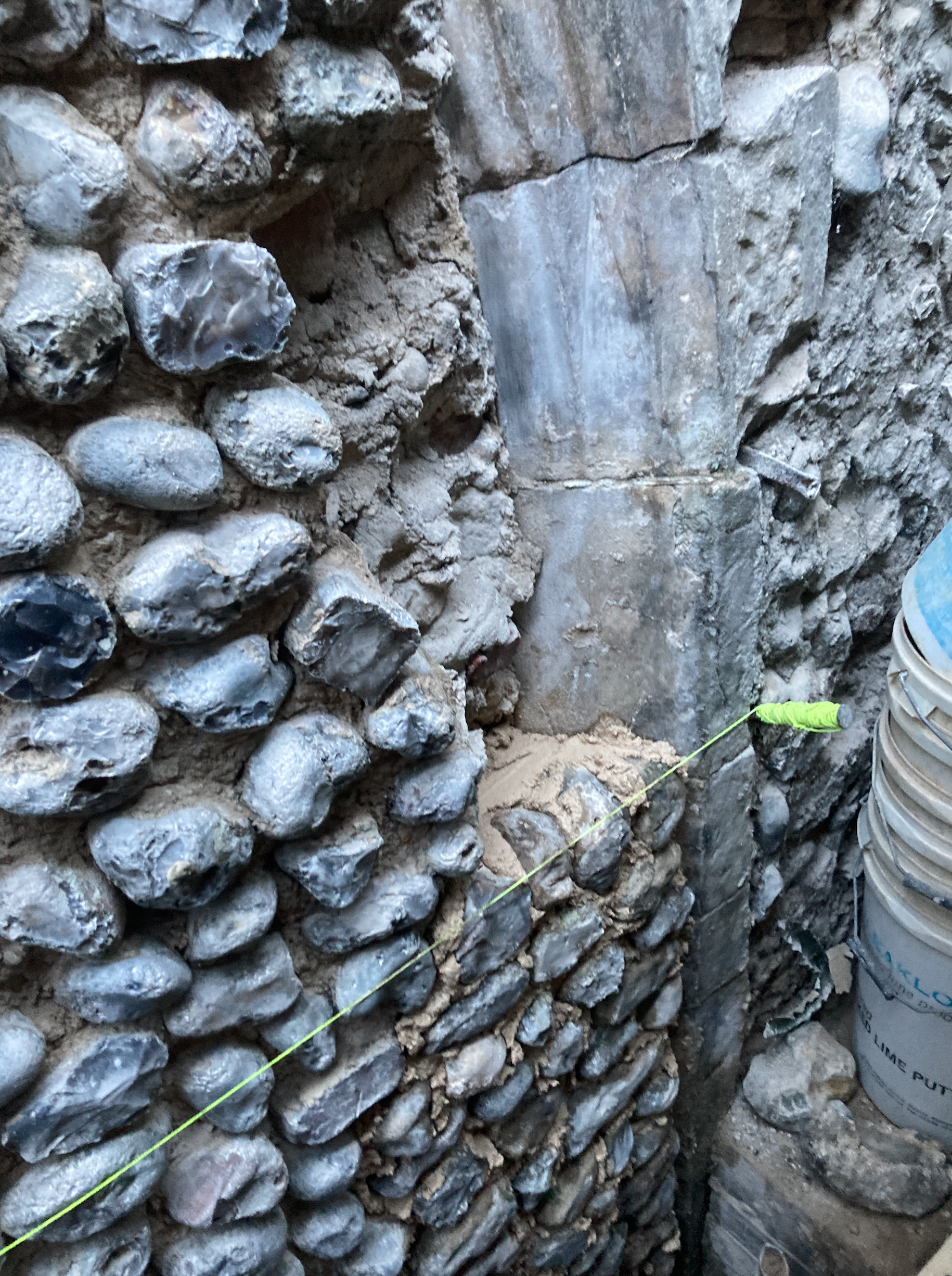
7. A cross section of the arch showing a composite of Scotia, right angle and Ogee.

8. Ladbrooke’s print of St Andrew’s

9 Showing two cill levels.

10 The completed pointing

********
December 2024
From the Bell Tower:
Searching for something Christmassy to write this month took me first to 1826 and a press
report in the Norfolk Chronicle from January 7th that year:
"Christmas Festivity.- About 30 of the poor people, labourers and others. with their
families, from the parishes of Ryburgh and Guist, were regaled by Mrs. F. G. Smith, the
lady of Colonel Smith, (who is at this time abroad) at their hospitable mansion, Sennowe
Lodge, with a bountiful supply of roast beef, plumb puddings, fowls, &c.. with plenty of
punch and good old ale, which renders it an event ever to be remembered by them with
gratitude to their liberal benefactress.
On the following day (Monday), about forty respectable tradesmen, with their wives, were
invited to dinner, tea, and supper; all present were surprised at the sumptuous and elegant
display of the varieties set before them. After dinner, were given the healths of Colonel and
Mrs. Smith, Mr. Henry Smith and a speedy recovery, Admiral and Mrs. Capel, the Army
and Navy, &c. &c. with three times three; many excellent songs were sung; after which the
merry dance commenced with reels and country dances, which were kept up with great
spirit until a late hour: so convivial were the party, that every heart seemed to glow with a
mixture of pleasure and gratitude for so liberal an entertainment, likewise for the unlimited
and polite attention paid by Mr. and Mrs. Raper, which greatly contributed to the pleasures
of the evening.-This is the second handsome treat this worthy Family has given their
tradesmen within the last twelve months."
How times have changed I thought, as I started to look through the Ryburgh school log
books. Thinking back to when I was at primary school in the winter of 1962/3, still a clear
memory for me at school in Great Shelford in Cambridgeshire, I wondered how the winter
was for children in Ryburgh in comparison. It turned out to be perhaps unsurprisingly
familiar.
For a change the log book, written by head Mervyn White in his last academic year at the
school, was more informative than usually the case so I will quote from those pages
directly and I hope that it will take some readers back with fond memories of that time or
as it says above “ever to be remembered by them with gratitude” :
1962
December 4th.
Fairly moderate winter so far, fires only lit occasionally. Mrs Barnes accompanied the
children from my class to Fakenham S[econdary] M[odern] School where they enjoyed
very much the Christmas Entertainment.
14th. The Children’s Christmas Party was held from 3.45 to 7p.m. Mr Joice was with us
again as well as Fr. Mrs. A.R. Thompson and Mrs. Drury. After an excellent meal the
children had fun and games in my classroom. Sir T. Cook once again gave us a lovely
Christmas tree.
17th. The children gave a Christmas entertainment today to parents & friends ( about 60 in
all including the Chairman of the Managers). Lady Pryce-Jones was also present. The
concert included a Nativity Play, three short plays, percussion band and country dancing.
18th. Once again we had a Carol Service in church with lessons read by three children,
The service was very well attended and at the close we “broke up” until January 8th.
During the holiday three tons of coke were delivered.
1963 January 8th.
School re-opened in extremely severe weather. Snow and ice have persisted all over the
country for over a week
11th. Fires in all rooms- very cold Wash basins frozen up in both lobbies
18th. No improvement in the weather. Biting wind and driving snow
21st. Ninety-eight main roads blocked and hundreds of minor roads. Little Ryburgh and
Gateley roads now blocked by snowdrifts. The five children from Gateley remained at
home, three from West Wood also.
22nd. Snow and ice everywhere. Last night’s temperature dropped to minus 9 degrees C.
Wash basins still frozen.
23rd. Thirty hundredweight of coal delivered today.
24th. Gateley bus still unable to get through.
25th. School closed while two boys sat for secondary Selection Test. Mrs Howard from
Stibbard and Mrs Barnes exchanged schools for invigilating.
26 th. The bottom grate of the school boiler broke in two this morning. Mr Adams from the
Foundry kindly made a temporary repair and the fire was soon going again. Water pipes in
the kitchen frozen up on Saturday and Sunday but thawed again without trouble. Wash
basins still frozen.
28th. The thaw has begun; roads now fairly clear; all pipes unfrozen with, fortunately, not
one burst.
29th. Snow nearly all gone but very wet everywhere.
31st. The river route from Yarmouth to Norwich was open today after being closed for nine
days because of ice.
February 1 st.
The library van called today to exchange books.
4th. Very heavy falls of snow during the week-end, but no bad drifting locally.
15th. Snow and ice still persists.
19th. More snow. The playground has been covered since January 1st.
21st. School closed this afternoon for half-term holiday -Re-open on February 27th.
27th. School re-opened. Two tons of coke delivered.
March 4th.
First frost -free night since Christmas.
7th. Snow all gone, at last.
************